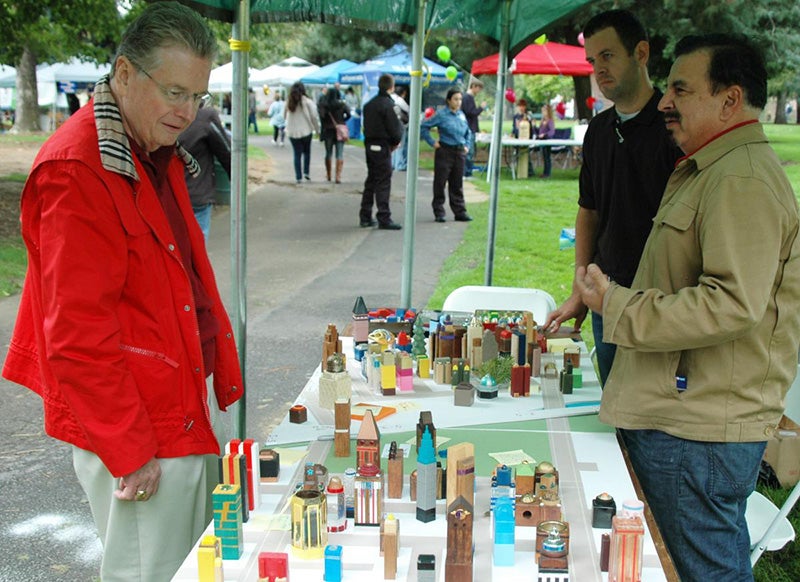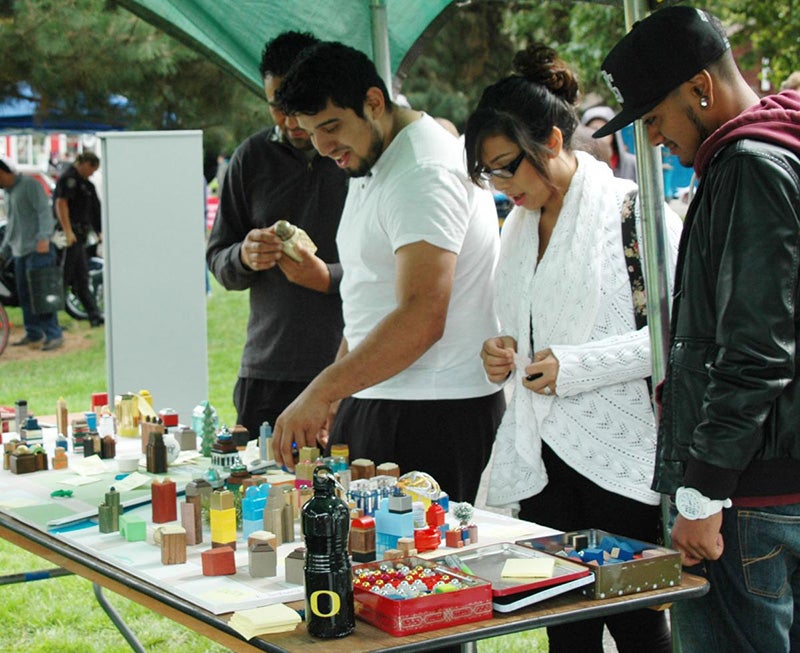On December 4th, students in the Sustainable Cities Year Program presented their final plans to the City of Medford from projects undertaken during fall term in three Department of Planning, Public Policy and Management (PPPM) classes.
The three classes—Introduction to Planning Practice, Human Settlements, and Planning Analysis I—focused on encouraging new development. Students were assigned to develop and present a final report on how the Jackson County area can continue transitioning into more sustainable, efficient practices. The same group of first year graduate students is in all three classes.
The students’ efforts included a site visit early in fall term to Medford City Hall, where half a dozen city staff gave an overview of the city, their priorities, the background and history of Medford, and information about the specific site the classes were working on. The visit included impromptu conversations with interested and curious community members also assessing the site, an area on East Main Street with many of the city’s health development services.

Above: Mayor of Medford Gary Wheeler stopped by a booth set up by Assistant Professor Gerardo Sandoval's students and volunteers to discuss the needs of the Medford Latino community.
“It’s one thing to go out with a class and look at a site and look around,” says Rich Margerum, professor of Introduction to Planning Practice and head of PPPM. “It’s a whole other thing to go out with half a dozen city staff and get their perspective.”
Assistant Professor Rebecca Lewis, who is teaching Human Settlements, thought the biggest gain of the Medford visit was hearing how people who worked and lived in the city wanted the area to change in the future.
“It was great to go around the site and get a feel for it,” she says.
Students created overall plans that incorporate all aspects of the community. They determine if bike lanes would be useful, if buildings could be repurposed or rebuilt, and if parks should be incorporated in the area. They also determine how redevelopment could affect traffic in the area, the impact on nearby neighborhoods, and the best ways to maintain the character of an area.
The students’ final proposals are meant to spark conversation within the city and community about how the area can develop in the next ten to twenty years.
“It may open up new ideas that just haven’t been on the table before,” says Margerum. “This is an older area, and it’s hard to imagine something new and exciting. It’s a big leap for a community to say, ‘here’s a possibility.’ ”
Additionally, Assistant Professor Gerardo Sandoval’s SCYP work in fall included an outreach project to Latino communities in Medford. Sandoval’s work was featured at a multicultural fair in Medford where, using models and 3-D objects, visitors to the SCYP table were able to share their concerns about and visions for Medford.

Above: Visitors to the SCYP table constructed their own version of Medford using toys and game pieces on a small-scale model of the city. The exercise is especially great for opening up dialogue with undocumented immigrants, a community that is often hesitant to attend public planning meetings, and other local residents.
